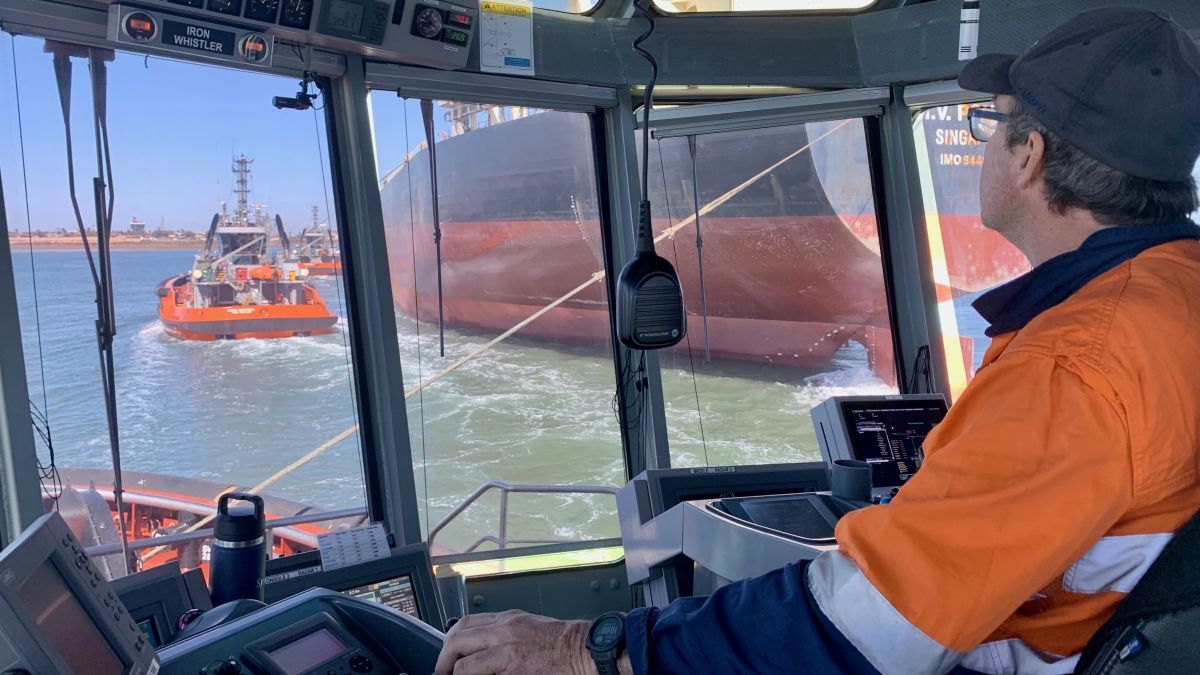SeaWays Consultants managing director Captain Arie Nygh explains the importance of teaching pilots the technical capabilities of tugs
Having worked, trained and assessed in more than 100 ports globally, it was evident to me there is a significant knowledge gap pertaining to the safe and effective use of tugs by pilots.
To address this shortfall, SeaWays developed a one-day workshop, Effective use of tugs for pilots & exempt masters. To date, it has been delivered to more than 650 pilots around the world.
At no time do we attempt to tell pilots how to pilot ships; rather our quest is to inform and educate pilots, based on tug master’s expertise, on all things a professional pilot should know about different tugs’ capabilities along with what they can and cannot do to assist the pilot in the task at hand.
As we well know, overnight Covid-19 changed the world and how we go about our business, particularly in the maritime industry. This energised me to convert our workshop into online e-learning.
Over the course of this year-long project, I also took this opportunity to revamp and further develop the content.
This includes filming live on tugs while they respond to pilot’s orders, giving unique insight to when a pilot gives an order, how and why the tug responds and how long it takes.
I then sent the draft courses to six highly respected, senior pilots based throughout the world to review and critique the lessons. Their valued input and suggestions were then incorporated into the lessons.
Now a pilot or exempt master, no matter where they are stationed in the world, can undertake this ClassNK-accredited course cost-effectively in their own time and at their own pace.
Given the evolving new tug and equipment designs, the gap in knowledge pertaining to tugs and their effective use is widening. This course aims to close this gap.
Tugs and their masters are important extensions of the pilot’s bridge resource-management team. Tug masters are the most important part of this team, given challenges faced by pilots relating to language barriers and competencies of bridge teams on ships.
Tugs chosen for a specific port and appropriately trained tug masters can greatly support a pilot in safe day-to-day operations and assist in saving the ship when things go wrong.
Tug masters generally recognise when things are not going to plan, or an incident is imminent. It is important the shared mental model between all parties is well understood and there are communication protocols between pilot and tugs.
A common understanding is a critical aspect of the pilot’s resource management, hence a shared responsibility to communicate concerns to the pilot enhances safe operations.
This may all seem logical, but alas, this is not always the case. While there has been marked improvement in many ports, I still witness poor communications and cultural issues whereby a tug master does not feel comfortable or empowered to give feedback to a pilot.
I have witnessed pilots ordering tugs to undertake manoeuvres they are not designed to do and conversely, pilots under-utilising tugs as they do not understand what the tug can actually do.
In many ports, pilots are the inhouse subject matter experts on all things towage. It is imperative they have the profound knowledge required of tugs and their effective use. So is ensuring sound advice is forthcoming.
All this applies even more so to exempt masters, who in many cases only utilise tugs for their ships when environmental conditions are extreme. Consequently, they may not be as knowledgeable or current with tug usage and commands at a time of their extreme need.
This can in turn heighten risk to personnel, the environment, third-party assets, their vessel and attending tugs.
Online e-learning modules provide an answer. SeaWays’ modules involve some 20 lessons each of around 25 minutes per lesson. They include a combination of instructions, PowerPoint presentations and unique video footage filmed live on tugs responding to pilot’s orders during operations.






